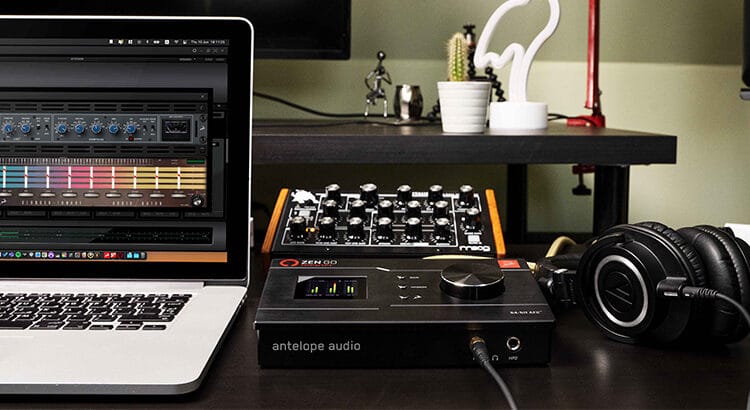When talking about professional recording/mix quality, what do we even mean? By definition, a professional is someone who earns a living doing the activity in question. So what does a ‘professional’ recording or mix quality mean?
‘Professional’ Sound
There are many aspects to professional sound, and it is an entirely case by case basis. Generally, what is meant, is а sound that has been recorded in a professional recording studio. Studios tend to have top of the range equipment to provide the best sound, along with acoustically treated rooms to get a flat frequency response. A studio sound can be achieved in small bedroom studios however, there are many things that can be done to get there.
The first step to a better quality tends to be microphones. However, there is another important link in the chain – the audio interface. They latter provides the two most important aspects of sound quality – the converters and mic preamps.
Preamps and Converters
The first part of the chain in an interface is the microphone/instrument preamps. They convert a weak electrical signal into an output signal strong enough to be noise-tolerant and strong enough for further processing. Without this, the final signal would be noisy or distorted. When looking at preamps we look at the linearity and impedance.
Preamp linearity is the preamp’s ability to provide gain throughout its operating range. This is important as not all microphones operate at the same levels. Condenser microphones require less gain than ribbon or dynamic microphones, this is only because condensers require phantom power which provides an extra 48 volts to the mic’s built-in circuitry. However, linearity becomes heavily important more for the ribbons and dynamics. As they don’t need phantom power, higher gain levels are required to get a useable signal. If the preamps don’t have a high linearity, it leads to much more self-noise being generated by the preamps, meaning the signal-to-noise ratio would be too high.
As previously mentioned, converters play an important role in the process. Converters receive the audio from the preamp and convert the analogue signal into a useable digital signal for your DAW to receive. Converters can make or break an interface. An interface could have great preamps, but if the converters aren’t of an equal or better quality, then you will end up with a diminished quality. Converters determines the headroom and sample rates of the new digital signal. If the converters aren’t of a desirable quality this could lead to poor audio resolution, quantisation errors, high self-noise, and jittering. When looking for an interface, a producer or engineer should be looking for high headroom and high sample rate as these generally signify good quality converters.
Other Considerations
Though preamps and converters are incredibly important to improve recording quality, there are a couple of other considerations. Some are hardware features, such as clocking; others are useful software features.
Clocking is an important step in the conversion process. The clocking determines the accuracy of the sampling, the more accurate the sampling, the less jitter there will be. Less jitter equals better representation of the original analogue signal. Clocking also plays a vital role when expanding an interface via ADAT or other digital connections. The clock syncs the devices to make sure there is no quality loss between the devices.
Software plugins can be a huge benefit to those new to the audio world. Emulations allow access to emulations of some of the world’s most famous pieces of audio equipment without having to spend a lot of money or take up vital space. These emulations can be either used in the DAW of choice as plugins, or if the USB Audio Interfaces support DSP chips, directly from the device itself.
Conclusion
Today’s music industry has many options for improving audio fidelity and therefore a far better recording quality can be achieved, even from a home/bedroom studio. One company that provides all the above and more is Antelope Audio. A good introduction to their line of interface is the Zen Go Synergy Core.





